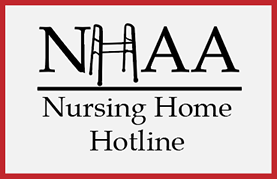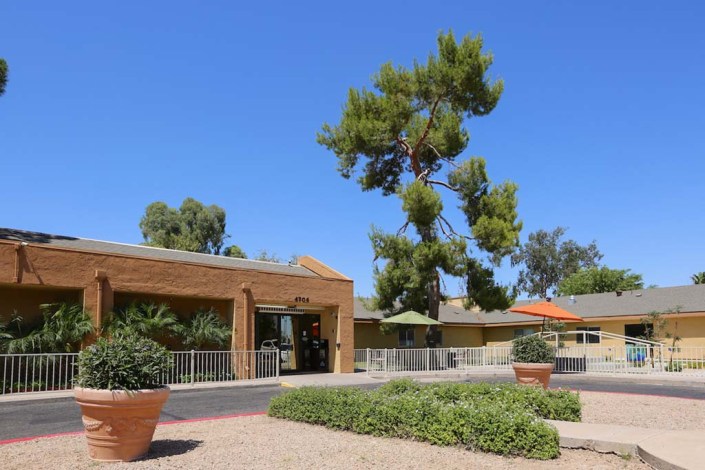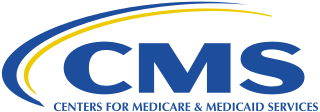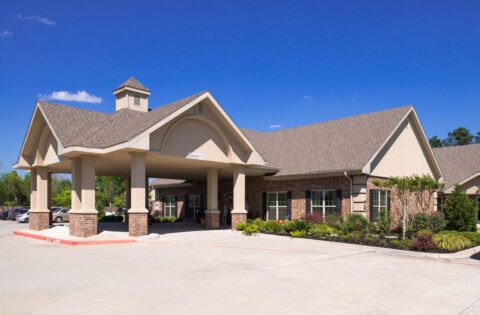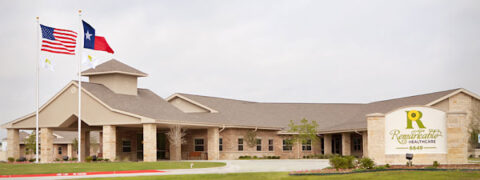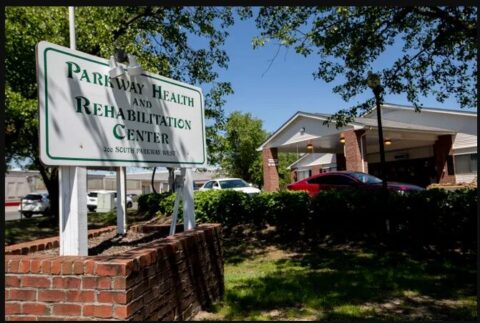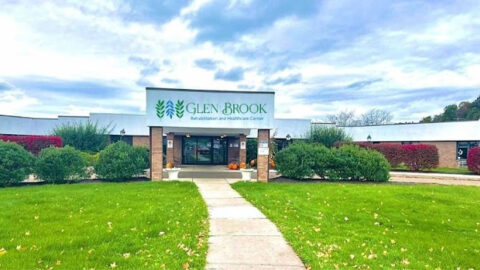State Findings:
Based on review of clinical record review, staff interviews, facility policy and procedure, the facility failed to ensure wound care and treatment was administered as ordered for one resident (#1). The deficient practice could result worsening of the wound.
Findings include:
Resident #1 was admitted on [DATE] with diagnoses of orthopedic aftercare following surgical amputation, acquired absence of left leg above knee, peripheral vascular disease and local infection of the skin and subcutaneous tissue.
A care plan initated on November 11, 2022 revealed the resident had an actual impairment to skin integrity with potential for further impairment related to decreased mobility related to left AKA (above the knee amputation) surgical wound. The goal was that the resident would not have any complications related to the left AKA incision with wound vac. Interventions included to administer treatment per orders, observe effectiveness, identify/document potential causative factors and eliminate/resolve where possible, and follow facility protocols for treatment of injury.
The provider order dated November 14, 2022 revealed an order for a NPWT (Negative Pressure Wound Therapy) to left AKA at 125 mmHg (millimeters of mercury) continuously; check proper settings and function; change canister as needed; patch leaks as needed with drape. If unable to maintain good seal or if [NAME] bleeding occurs, stop NPWT and remove dressing; loosely pack with damp gauze with 1/4 strength Dakin’s solution and cover with dry dressing; and, notify physician and wound care team every shift.
Another physician order dated November 15, 2022 included for NPWT to left AKA at 125 mmHg
continuously; check proper settings and function; change canister as needed; patch leaks as needed with drape. If unable to maintain good seal or if [NAME] bleeding occurs, stop NPWT and remove foam dressing; clean with NS (normal saline) or wound cleanser, pat dry and cover with dry dressing and secure; and to notify physician and wound care team every shift for surgical site.
The admission Minimum Data Set (MDS) assessment dated [DATE] included a brief interview for mental status (BIMS) score of 14 indicating the resident had intact cognition. The assessment included that resident required extensive physical assistance with bed mobility, transfers, locomotion, dressing, toilet use, and personal hygiene.
A provider note November 21, 2022 revealed that the left lower extremity had a significant edema (swelling) within the thigh and over the recent AKA (above the knee amputation) stump. The note included the wound vac was removed for examination and there was significant leakage through the adhesive and poor suction on the sponge dressing. Per the documentation, the skin around the distal thigh was macerated and there was thin serosanguineous drainage from the central and lateral aspect of the wound. Further, the note included the wound vac had not been functioning appropriately; and that, the provider spent a great deal of time cleaning and prepping the wound and reapplying the wound vac.
The physician order dated November 21, 2022 included for doxycycline hyclate (antibiotic) Tablet 100 mg (milligram) give 1 tablet by mouth two times a day for left stump cellulitis for 5 days.
A daily skilled note dated November 24, 2022 written by a licensed practical nurse (LPN/staff #13) included that the resident had a +4 pitting edema to the left AKA with serosanguineous weeping. The note included the wound vac had no suction and an attempt was made to replace the wound vac; however, the staff was unable to due to moisture. Per the note, dry dressing and gauze with calcium alginate for absorption was applied to the wound. The clinical record revealed no documentation that the physician or the wound team was notified that the wound vac was removed on November 24, 2022.
A daily skilled note dated November 25, 2022 included the resident had a wound vac to the left AKA surgical wound and that, the resident responded to treatment. The documentation also included that the wound vac dressing was not holding pressure and had to be replaced.
The clinical record revealed no documentation that the physician or the wound team was notified that the wound vac dressing was not holding pressure and had to be replaced on November 25, 2022.
A nursing note dated November 26, 2022 at 10:57 a.m. revealed that the wound vac dressing was unable to maintain a good seal or adequate suction despite numerous attempts to seal the dressing. Per the note, the wound vac was stopped and the foam dressing was removed; and that, the incisin was cleansed with wound cleanser, patted dry and covered with dry dressing and absorbent pads and secured with tape. Further, the documentation included that a supervisor was notified.
An eMAR (electronic medication administration record) note dated November 26, 2022 at 4:42 pm included that the left stump remained with the wound vac in place at 150 mm Hg.
However, there was no evidence found in the clinical record that the order was changed for the wound vac suction setting from 125 mmHg to 150 mmHg.
An eMAR note dated November 27, 2022 revealed the resident had a wet to dry dressing applied to the left AKA surgical incision.
The MAR for November 2022 revealed the application of NPWT was not marked as administered on November 26 (day shift) and 27, 2022.
There was no evidence found in the clinical record the physician or the wound team was notified of the wound vac not administered as ordered on November 26 (day shift) and 27, 2022.
A nursing note dated November 28, 2022 revealed there was a dark tissue noted to left stump and the provider was on site and ordered to have the resident sent to the hospital ER via 911. Per the
documentation, the family was notified of the transfer.
A physician order dated November 28, 2022 included to send resident to the ER (emergency room ) for evaluation and treatment via 911.
A progress note dated November 28, 2022 revealed that the provider received a call from an NP (nurse practitioner) and a subsequent photo of change in resident’s surgical stump. The note included that it needed to be addressed immediately in a hospital; and that, the provider recommend to send the resident to the hospital.
An interview was conducted on December 21, 2022 at 8:23 a.m. with the wound nurse (staff #15) who stated that wound vac’s should be monitored every shift to ensure they have a seal and the suction was set to the proper level ordered. Staff #15 stated staff are trained to re-enforce the dressing or apply a new one if there was a leak in the wound vac. Staff #15 stated if they cannot get it to maintain good suction they should call the wound team or the provider. Regarding resident #1, the wound nurse said that the resident had a lot of drainage from his surgical wound and it would fill up the small canisters on the wound vac quickly.
Staff #15 stated that as long as the canisters were changed regularly, the dressing would not become saturated and it would maintain a good seal; and that, the facility made sure to have back up canisters in the room and at the nursing station to avoid fluid back up into the dressing. Staff #15 said that the issue of excessive fluid was identified on the day of resident #1’s admission and a more advanced dressing (dermatack) was used for the drape to stick better to the wounds surrounding tissue. Further, the wound nurse said that she was never called or notified when resident #1 had issues with his wound vac or when there were periods when the wound vac was not in place.
During a phone interview with a licensed practical nurse (LPN/staff #13) conducted on December 21, 2022 at 10:04 a.m. the LPN stated that resident #1’s wound vac was not draining; and, she had to redo the dressing because when she came on shift the wound vac was not in place. The LPN said she did not know how long the wound vac had been off the resident but the bed was saturated from the night shift. Staff #13 stated she could not get the wound vac to function properly; and, she was not given any information on how to use the wound vac or how to apply it to the resident.
An interview was conducted on December 21, 2022 at 11:48 a.m. with another LPN (staff #71) who stated that the suction on a wound vac is set as ordered by the provider; and that, when leaving the room she ensures there are no beeps on the wound vac and that the suction is good. Regarding resident #1, the LPN stated that the resident had a lot of seeping; and that, the canisters on the vac needed changed every couple hours. Regarding her documentation of suction setting of 150 mmHg, staff #71 stated she does not know why she documented that the wound vac was set at 150 mmHg without a physician order.
During an interview conducted with the Director of Nursing (DON/staff #73) on December 21, 2022 at 11:57 a.m., the DON stated the expectation was for staff to apply the wound vac properly and monitor that it is functioning during the shift. Regarding resident #1, the DON stated that the resident needed his wound vac to be reapplied constantly and staff made attempts to reinforce the dressing. The DON stated there were extra canisters available in the resident’s room and at the nursing station because resident’s canisters were filling so fast. Further, the DON stated the expectation was for staff to follow the provider orders for wound care; and that, any issues are communicated with the providers and documented in the clinical record.
A facility policy titled Wound Management reviewed May 2022 included to monitor impact of interventions and modify interventions as appropriate based on any identified changes in condition.
Your Experience Matters
...and we want to hear it.
NHAA is here to assist families, residents, and the community by sounding the alarm on issues like those found above. This nursing home and many others across the country are cited for abuse and neglect.
If you have or had a loved one living in this nursing home or any other nursing home where you suspect any form of abuse or neglect, contact us immediately.
We have helped many already and we can help you and your loved one as well by filing a state complaint, hiring a specialized nursing home attorney or helping you find a more suitable location for your loved one.
You can make a difference, even if your loved one has already passed away.
Please give us a call at 1-800-645-5262 or fill out our form detailing your experience.
Personal Note from NHA-Advocates
NHAA shares with all the families of loved ones who are confined to nursing homes the pain and anguish of putting them in the care of someone else. We expect our loved ones to be treated with dignity and honor in the homes we place them. We cannot emphasize enough to family members of nursing home residents; frequent visits are essential to our loved ones’ well-being and safety.
If you are struggling and upset, click here to understand your options, or contact us through our contact form or call our toll free hot line number: 1-800-645-5262.
